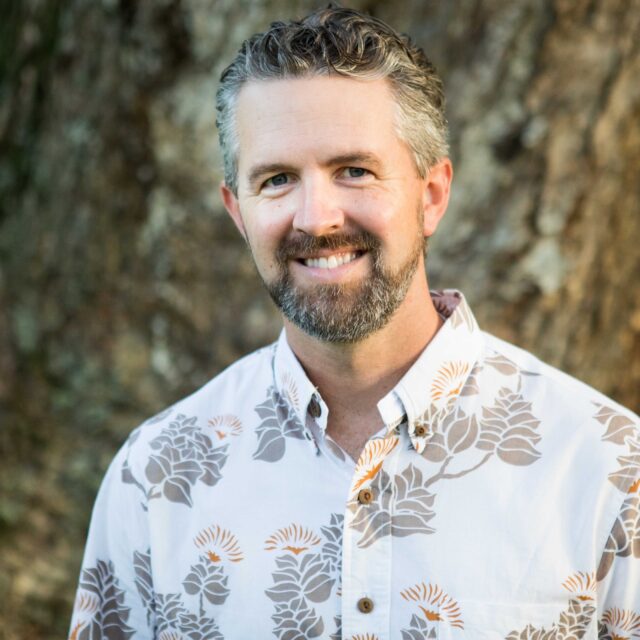How Veterans and Those Who Care About Them Can Help Prevent Firearm Suicide

9.27.2024
Content Warning
This blog post references firearms, military service, veteran suicide, and firearm suicide. Please take care while reading.
If you are a veteran in crisis—or you’re concerned about one—free, confidential support is available 24/7. Call the Veterans Crisis Line at 988 and press 1, text 838255, or chat online at veteranscrisisline.net.
If you or someone you know is struggling or in crisis, please call or text 988, or visit 988lifeline.org/chat to chat with a counselor from the 988 Suicide & Crisis Lifeline, previously known as the National Suicide Prevention Lifeline. The 988 Suicide & Crisis Lifeline provides 24/7, free, and confidential support to people in suicidal crisis or emotional distress anywhere in the U.S.
When I was in Boy Scouts, I earned the Rifle Shooting merit badge by completing a list of tasks and activities that centered primarily around gun safety and marksmanship.
A handful of years after becoming an Eagle Scout, I became an Army officer. Again, I found myself on a rifle range. This time, I had a very different weapon and a very different objective. Along with weapons safety and marksmanship, the Army taught me how to use a gun to kill other human beings.
In the military, we use guns and other weapons systems almost exclusively to suppress and kill the enemy. We learn how to utilize a well-cared-for assault rifle, machine gun, or pistol to aim, shoot, and destroy our human targets in combat. This is our job while serving. The military is, after all, our nation’s “profession of arms.”
I don’t use this language lightly. I understand that the bluntness with which I talk about using guns to kill may be off-putting, even trauma-inducing for some—and for that, I apologize.
Still, I discuss this topic so directly because, for those of us who served, the lethal power of firearms is a constant focus. The military trained me and other service members to take very seriously the responsibility that comes with holding a loaded weapon. Military firearms culture—drilled into us by officers and NCOs—has three basic pillars:
- Training
- Safety
- Accountability
These tenets and ensuing practices turn veterans into some of the country’s most thoughtful and responsible gun owners.
Unfortunately, too often, a military veteran finds themself in a crisis of mental and emotional wellness. That crisis can often be addressed through proper intervention and preventative care. However, when these techniques are not used or are not sufficient to de-escalate the crisis, a veteran can become suicidal.
Any person—veteran or civilian—who is in a suicidal crisis wants to put a stop to the suffering they are experiencing. When a veteran has decided to attempt to end their own life, it should not surprise us that they often turn to guns.
About half of all veterans own a gun, and 53% of veteran gun owners keep at least one gun loaded and unlocked in their home. That’s more than four million veterans with easy access to a gun in a moment of crisis—and that access may well be the difference between life and death.
Veterans are three times more likely to die by gun suicide than their civilian counterparts, and 72% of veteran suicides are by gun, compared to about half of nonveterans.
It is imperative that those who care about the health and well-being of veterans understand the outsized role that guns play in the veteran suicide epidemic. Suicide can often be prevented. If a friend or loved one enters into a suicidal crisis and has easy access to a gun, there are things that natural helpers—family, friends, neighbors, military buddies—can do to intervene. At Everytown, we enlisted the aid of veterans to help form an intervention strategy.
In 2017, Everytown for Gun Safety launched its national Veterans Advisory Council (VAC). The VAC’s primary goal was to engage veterans across the spectrum of gun violence prevention.
Veterans are respected by most Americans and trusted for their opinions on guns. Thus, their voices are credible and powerful on any number of life-saving issues. The VAC prioritizes taking action in areas of gun violence that impact all Americans: civilians and veterans alike. But on one issue, the council turns our attention back to our own community.
The plague of veteran suicide takes the lives of 18 veterans every day, 13 of them by firearm. In total, approximately 4,600 veterans die by firearm suicide every year.
Many other stakeholders, including the federal government and scores of nonprofits, are working to address veteran suicide through preventative measures such as:
- Mental health services,
- Peer-to-peer counseling, and
- Substance abuse treatment.
Studies show that each of those pathways can reduce suicide among veterans. However, what those of us who have served know is that none of these treatments will be effective if a veteran in crisis has already reached for a pre-loaded gun and pulled the trigger.
The Everytown VAC knew we needed to take swift action to intervene more quickly and effectively. To do so, we adapted a concept from our military service known as the “continuum of force.”
In combat—despite what the movies might portray—we aren’t allowed to shoot first and ask questions later. In fact, we follow a rigid set of guidelines called rules of engagement (ROE).
At the most basic level, a well-constructed ROE will appropriately escalate the use of force to the minimum effort required to suppress the threat. Imagine a soldier in Afghanistan approaching a suspicious local national who might appear hostile. Well before even thinking about shooting, the soldier will:
- Stop;
- Show his weapon;
- Shout at the individual;
- Shove or otherwise engage the person with non-lethal force; and then, only when absolutely necessary,
- Shoot.
The VAC applied a similar thought process to intervening with a veteran experiencing a suicidal crisis. We called this the Continuum of Gun Suicide Intervention.
The Continuum is designed to allow a natural helper to do just enough to separate a person in crisis from their gun and to save a life. When sharing the Continuum with veterans, we typically prompt veterans to plan the actions they will take when they get a call from a friend who is in crisis and has access to a gun.
The Continuum is laid out below. While reviewing these options, it is important to remember that the interventions do not always follow a linear path. It is up to natural helpers to determine the step(s) that are most appropriate to intervene when a loved one is in crisis.
The base of the Continuum is secure storage. At this step, a veteran or other natural helper ensures that all guns in the home of the person in crisis are:
- Unloaded,
- Locked, and
- Stored separately from ammunition.
A natural helper can ask to be given the keys or other secure access to the gun locks and gun safes. This is akin to taking the car keys from a friend at a bar who had too much to drink. Giving someone else the keys preserves a person’s possession of guns while limiting access during a crisis.
If the previous steps don’t create enough time and space to allow the suicidal person to exit the crisis, out-of-home storage is an option in some form in most of the U.S. Many states are developing storage maps that can allow natural helpers to more easily access this resource.
In a handful of states, a person who knows they are at risk for suicide can become voluntarily prohibited. At this step, they can temporarily add themself to the FBI’s do-not-buy list to limit their ability to purchase a firearm until after their crisis has passed.
If the person in crisis is unwilling or unable to voluntarily take any of the steps above, a natural helper in more than 20 states could invoke the use of an Extreme Risk Protection Order, sometimes called a “red flag” order. This step brings the support of law enforcement and judicial review to the situation.
By offering a range of options and tools to separate a person in crisis from gun access, the Continuum of Intervention respects the rights of gun owners while empowering natural helpers. Ultimately, the Continuum provides the time and space that will allow the person to get the preventive treatment that will hopefully enable them to shift permanently out of suicidal crisis.
These are common-sense solutions for complicated problems. They are developed in part by veterans: the people who have served in our nation’s profession of arms and who have received significant tax-payer-subsidized weapons safety training.
These techniques can be used not only to intervene in veteran suicide, but also for nonveterans with gun access. We all must do what we can to save the lives of our loved ones—and that begins with gun safety.
Support for Those in Crisis
Veterans Crisis Line
If you are a veteran in crisis—or you’re concerned about one—free, confidential support is available 24/7. Call the Veterans Crisis Line at 988 and press 1, text 838255, or chat online at veteranscrisisline.net.
988 Suicide & Crisis Lifeline
If you or someone you know is struggling or in crisis, please call or text 988, or visit 988lifeline.org/chat to chat with a counselor from the 988 Suicide & Crisis Lifeline, previously known as the National Suicide Prevention Lifeline. The 988 Suicide & Crisis Lifeline provides 24/7, free, and confidential support to people in suicidal crisis or emotional distress anywhere in the U.S.
Everytown Resources
- Learn more about the Continuum of Interventions for Preventing Gun Suicide.
- Read more about addressing firearm suicide among military veterans in the report “Those Who Serve.”




